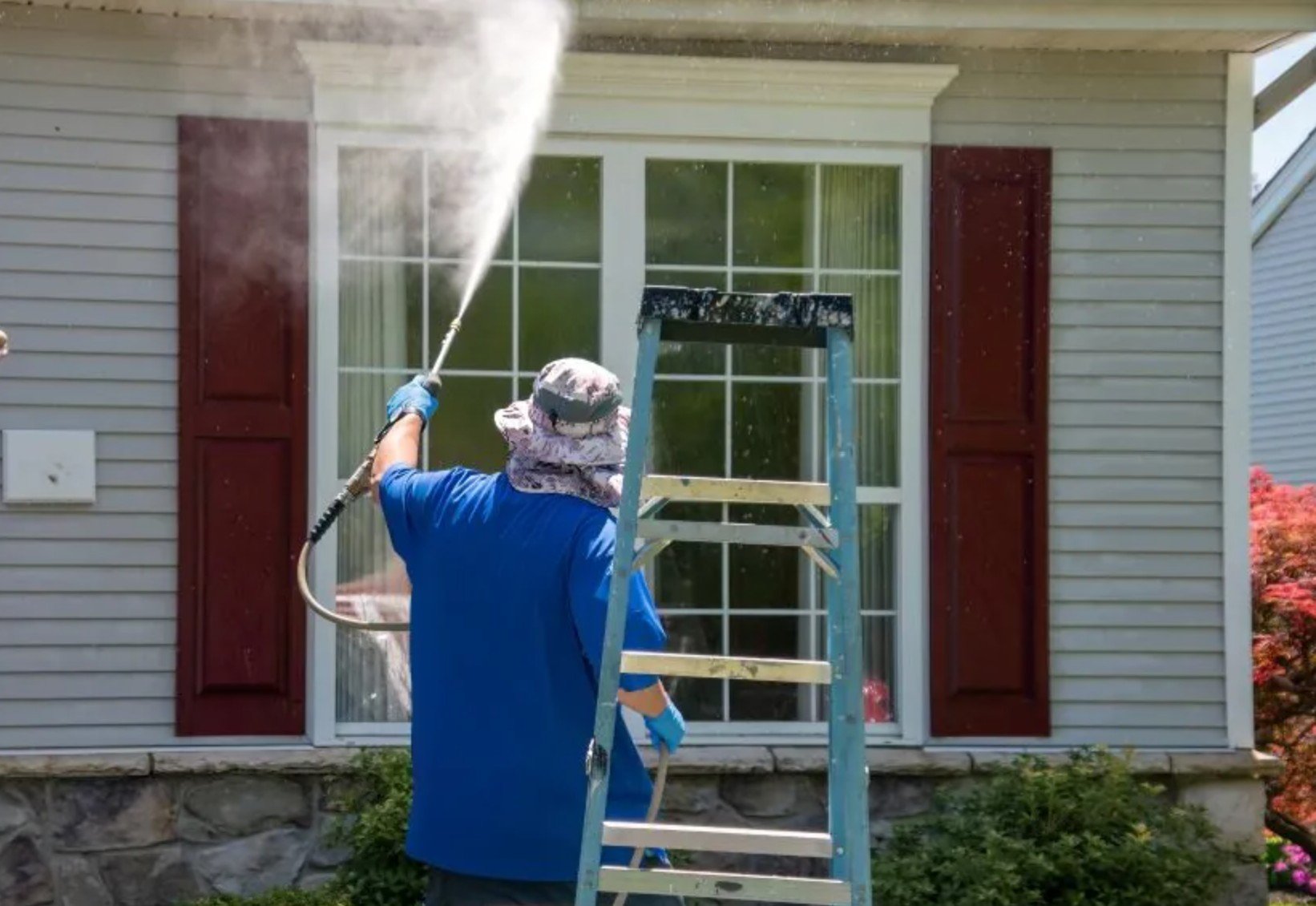
Power washing your home’s exterior is a quick and powerful way to remove dirt, mold, and grime — but when it comes to windows, things get a little risky. Homeowners often ask: Can you power wash windows without breaking them?
The short answer is: Yes, but it must be done with extreme care. Windows are delicate, and improper pressure, technique, or equipment can lead to cracks, broken seals, or shattered glass. Let’s break down how to power wash your windows safely — and when you should avoid it altogether. 🧼⚠️
🪟 The Risks of Power Washing Windows
Before you grab your pressure washer, it’s important to understand what can go wrong:
- Cracked or shattered glass from high pressure 💥
- Broken seals between double-pane windows — causing fogging and insulation failure
- Water intrusion around window frames, leading to mold or wall damage
- Damaged trim, caulking, or screens from direct spray
- Etched glass if dirt and high-pressure water mix like sandpaper
If you’re not using the proper settings or aiming from the wrong angle, the damage can be expensive — and potentially dangerous. 😬
✅ When Is It Safe to Power Wash Windows?
You can safely power wash windows if:
- You use very low pressure (under 1,000 PSI)
- Your windows are modern, well-installed, and sealed
- You use a wide-angle nozzle (40° or more)
- You stand at least 3–5 feet away
- You avoid spraying directly at the glass or seals
In fact, some professionals use low-pressure systems to clean windows efficiently, but it requires skill and the right equipment.
🔧 Recommended Equipment for Cleaning Windows
If you want to clean your windows with a power washer, you’ll need:
- ✅ A low-pressure setting (ideally 600–800 PSI)
- ✅ A 40-degree white spray tip (for gentle rinsing)
- ✅ A soap nozzle for applying detergent safely
- ✅ An extension wand to maintain distance from the glass
- ✅ A window cleaning solution — never just blast with water
Avoid the 0°, 15°, or turbo tips — those are far too powerful and can cause glass to break instantly.
Browse Amazon Here For Top Rated Power Washers And Accessories
🧼 Step-by-Step Guide: How to Power Wash Windows Safely
1. Inspect the Windows First
Check for cracks, damaged seals, or loose trim. If anything looks worn or unstable, do not power wash.
2. Pre-Rinse with a Hose
Lightly rinse the area around the window with a garden hose to loosen debris.
3. Apply Window-Safe Detergent
Use a detergent designed for glass or exterior siding. Apply it from bottom to top using a soap tip.
4. Let It Dwell
Allow the detergent to sit for 5–10 minutes (but don’t let it dry).
5. Rinse Gently from Top to Bottom
Switch to your 40° tip. Keep the spray at a downward angle, standing at least 3 feet away. Never spray directly into the edges or seams.
6. Dry with a Squeegee or Soft Towel
To avoid water spots or streaks, use a microfiber cloth or squeegee after rinsing. This gives a spotless finish. ✨
🛠️ Better Alternatives to Power Washing Windows
If you’re uncomfortable with the risks, here are safer alternatives:
- 🧽 Soft washing — Uses low-pressure and a foaming detergent
- 🪟 Traditional window cleaning — With squeegee, soap, and elbow grease
- 🧴 Water-fed pole systems — Long poles with purified water and gentle scrubbing brushes
These methods are safer and just as effective — especially for second-story windows or historic glass.
🧠 Pro Tips for the Best Results
- 🌤️ Wash windows in the early morning or late afternoon to avoid streaking from the sun
- 🌿 Rinse any landscaping below windows to prevent soap runoff from harming plants
- 🧴 Always use a non-ammonia-based cleaner for power washing to protect finishes
- 🧼 Avoid cleaning windows during freezing temps — water expansion can crack seals
- 👷♂️ If you have tinted windows, double-check with the manufacturer before using chemicals
🛑 Common Mistakes to Avoid
- ❌ Spraying windows with a 0° or 15° nozzle
- ❌ Holding the wand too close to the glass
- ❌ Spraying upward into seams or gaps
- ❌ Ignoring damaged window seals or frames
- ❌ Using harsh chemicals not intended for glass
Even if your windows survive the initial blast, improper cleaning can shorten their life or lead to fogging between panes.
🏁 Final Thoughts
So, can you power wash windows without breaking them? Yes — but only if you:
- Use low pressure (under 1,000 PSI)
- Choose the right nozzle and angle
- Stand at a safe distance
- Avoid direct, forceful sprays at seals or seams
For many homeowners, the risks outweigh the rewards, and using a hose or professional window cleaner may be the better call.
That said, if you’re careful and confident, you can use your power washer for sparkling clean windows — just go gently and follow the rules. 💧🪟✨
Browse Amazon Here For Top Rated Power Washers And Accessories






